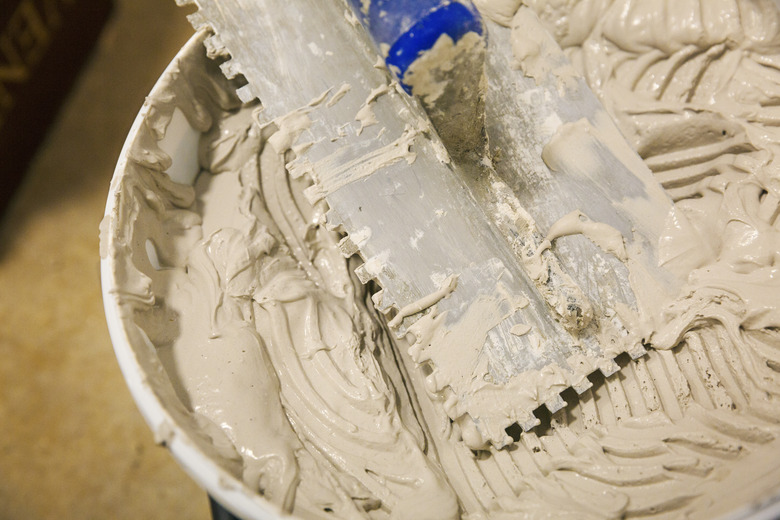Can You Thicken Runny Grout?
The formula for mixing grout appears simple on paper, but putting together the correct combination of water and powder to dry for a cohesive adhesive formulation can be tricky. If the grout is too dry, then it won't allow the tile to get a good purchase on the filling, and if it's too wet, it won't fill the grout lines properly. There are a few tips to ensure your grout is the correct consistency for a long-lasting binding relationship with the tile you've so carefully laid.
Tip
You can thicken grout by adding more dry powder while you're mixing it, but if it's still too runny after slaking, it isn't as easy to thicken it.
The Purpose of Grout
The Purpose of Grout
Grout gets a bad reputation for being difficult to create, slop down and maintain. The cementitious filler is vital to a well-crafted tiled project. It keeps the tile, no matter its shape, firmly in place and in line with its counterparts.
Make sure you are using the correct grout for your job. If you have joints that are less than 1/8 inch thick, an unsanded grout will make the job easier and offer better adhesion for those narrow nooks and crannies. For thicker joints between tiles, a sanded grout offers less shrinkage for a cleaner finish and a longer-lasting bond between the grout and the tile.
Best Consistency for Grout
Best Consistency for Grout
When you mix grout, no matter if it is sanded or unsanded, you are looking for a consistency that is thick and almost like wet clay. Mixing sanded grout to a consistency of peanut butter – and not the chunky kind – can ensure you won't have any cracks or shrinkage issues.
You want a smooth, thick paste with no lumps or channels of dry grout running through the mix. If you don't mix it properly, it may still adhere to the tiles and keep them in place, but you will have pits and crumbling in patches around the tiled area. If it is too dry, it can cause cracks in the tiles as the house settles. If it's too wet, it won't adhere properly to the tiles and will leave you with a slanted mess.
A good way to test grout consistency is to observe what happens when you scoop up a bit with your grout float. The pile should retain its shape and stay on the float when you turn it over. If the pile flows out into a puddle on your float or drips off, it's too thin, but it's too thick if it retains its shape but fall off the float when you invert it.
Too Much Water in Grout
Too Much Water in Grout
After following the grout manufacturer's directions and adding the correct amount of water and mixing, let the grout sit for at least 10 minutes. This is called slaking and will assist in not adding too much water or mix as you go.
If you have too much water in the grout, the mix will be runny and pour off the float. Add a small amount of latex additive into the mix. The sticky substance adds creaminess to the mixture. If the grout is more like a broth-based soup, you may need to ditch the entire batch and start from scratch. If the grout looks chalky after application, it could be that you need to let the grout cure for up to two weeks. Clean the surface with a commercial cleaner after it has cured.
